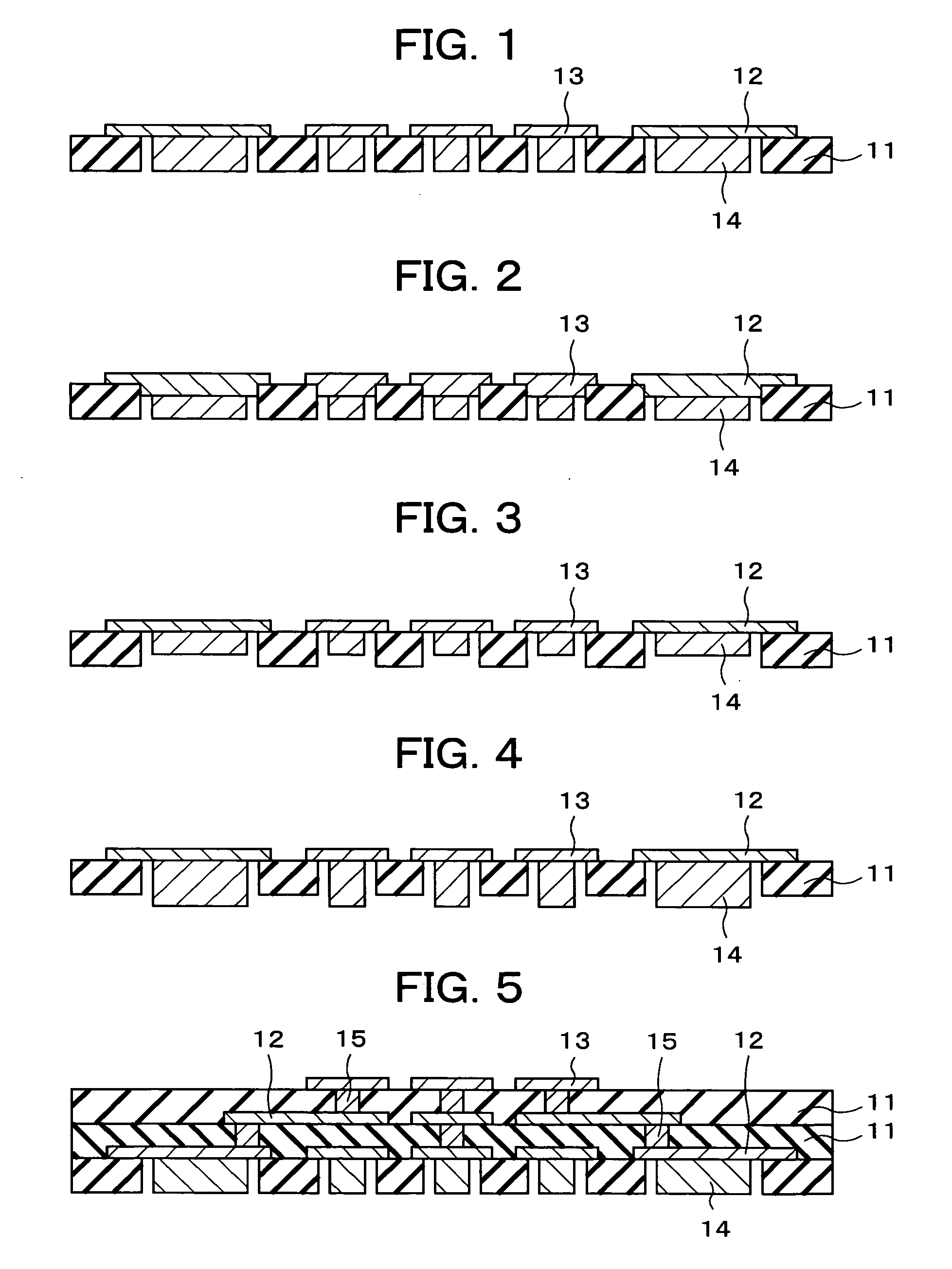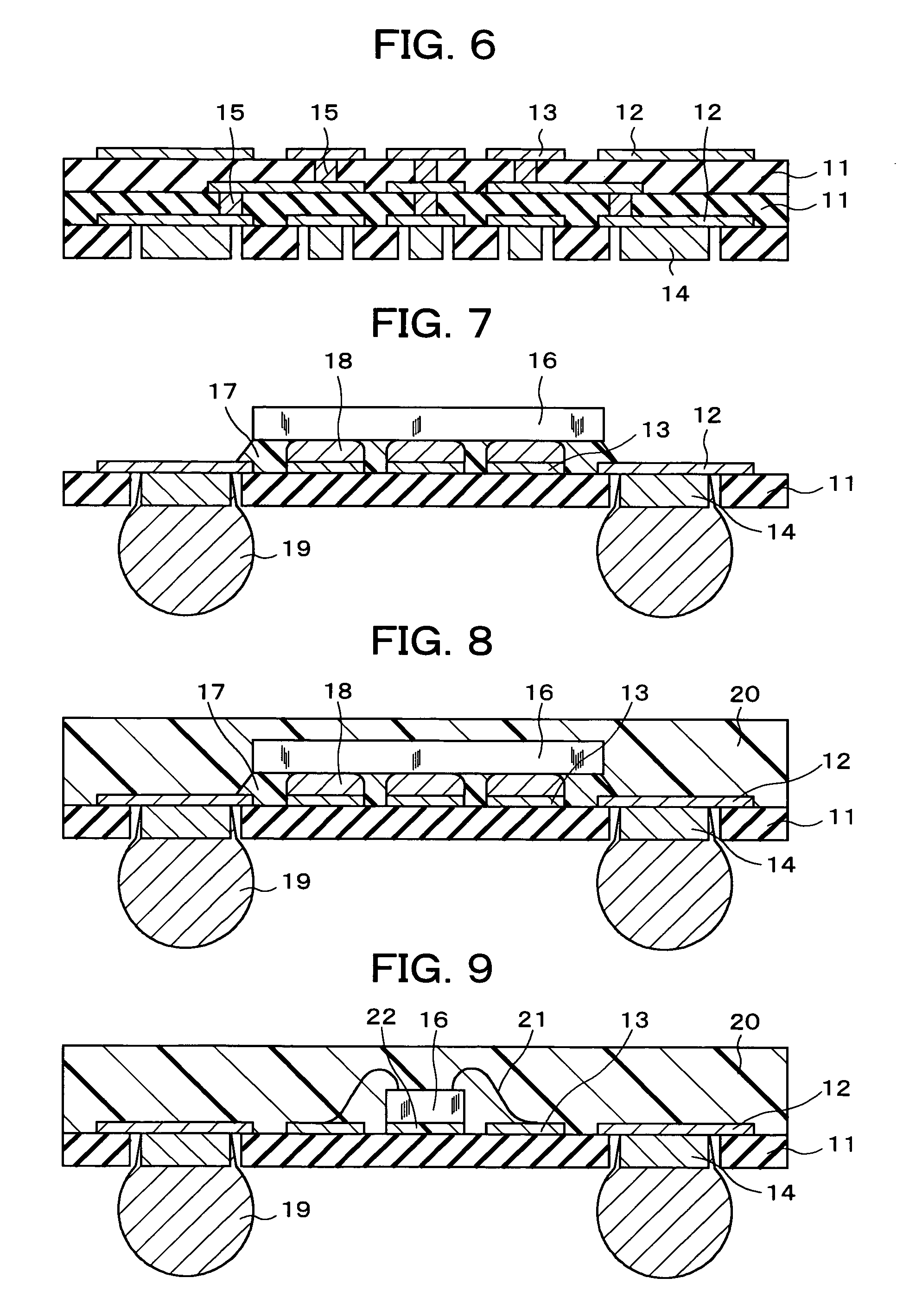Wiring board, semiconductor device in which wiring board is used, and method for manufacturing the same
- Summary
- Abstract
- Description
- Claims
- Application Information
AI Technical Summary
Benefits of technology
Problems solved by technology
Method used
Image
Examples
first embodiment
[0099] Embodiments of the present invention are described in detail below with reference to the attached diagrams. Described first is the present invention. FIG. 1 is a schematic cross-sectional view showing an example of a wiring board according to the present embodiment. The wiring substrate shown in FIG. 1 has a structure comprising an insulation layer 11, second electrodes 14 embedded in the insulation layer 11, and a wiring layer 12 and first electrodes 13 disposed on the insulation layer 11 and second electrodes 14, and the side surfaces from among the exposed surfaces of the second electrodes 14 are not in contact with the insulation layer 11.
[0100] The insulation layer 11 is formed, e.g., from a photosensitive or non-photosensitive organic material, and examples of the organic material that may be used include epoxy resin, epoxy acrylate resin, urethane acrylate resin, polyester resin, phenolic resin, polyimide resin, BCB (benzocyclobutene), PBO (polybenzoxazole), polynorbor...
third embodiment
[0134] the present invention is described next. FIG. 7 is a schematic cross-sectional view showing an example of the semiconductor device according to the present embodiment. In FIG. 7, the same reference numerals are used for the same constituent elements as in FIGS. 1 to 6, and a detailed description thereof is omitted. In the semiconductor device according to the present embodiment, a semiconductor element 16 is flip-chip connected by way of solder balls 18 to the first electrodes 13 of the wiring board. The board has a structure comprising an insulation layer 11, second electrodes 14 embedded in the insulation layer 11, and a wiring layer 12 and first electrodes 13 disposed on the insulation layer 11 and second electrodes 14, and the side surfaces from among the exposed surfaces of the second electrodes 14 are not in contact with the insulation layer 11. An underfill resin 17 is filled into the connection portion, and solder balls 19 are disposed on the second electrodes 14, as ...
fourth embodiment
[0157] The effects obtained by the semiconductor device according to the present embodiment are the same as the effects obtained by the semiconductor device described above.
[0158] The sixth embodiment of the present invention is described next. FIG. 10 is a schematic cross-sectional view showing an example of the semiconductor device according to the present embodiment. In FIG. 10, the same reference numerals are used for the same constituent elements as in FIGS. 1 to 9, and a detailed description thereof is omitted. The semiconductor device according to the present embodiment has a structure in which a semiconductor element 24 is mounted on the second electrodes 14, rather than the first electrodes 13 in the semiconductor device according to the third embodiment described above.
[0159] The diagram in FIG. 10 shows an example in which the semiconductor element 24 is mounted on the second electrodes 14 of the wiring board according to the first embodiment of the present invention sh...
PUM
 Login to View More
Login to View More Abstract
Description
Claims
Application Information
 Login to View More
Login to View More - R&D
- Intellectual Property
- Life Sciences
- Materials
- Tech Scout
- Unparalleled Data Quality
- Higher Quality Content
- 60% Fewer Hallucinations
Browse by: Latest US Patents, China's latest patents, Technical Efficacy Thesaurus, Application Domain, Technology Topic, Popular Technical Reports.
© 2025 PatSnap. All rights reserved.Legal|Privacy policy|Modern Slavery Act Transparency Statement|Sitemap|About US| Contact US: help@patsnap.com



